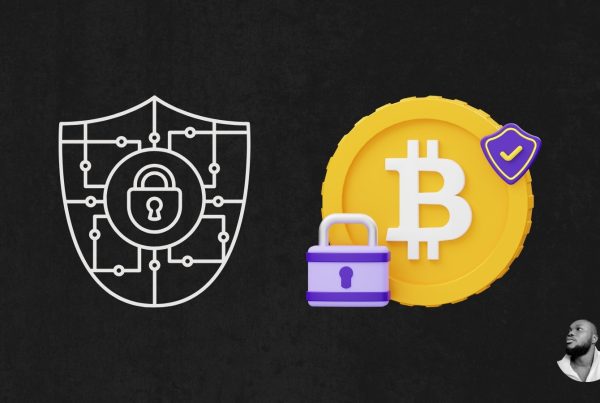Beginner’s Guide to DeFi Platforms
Decentralized Finance, commonly known as DeFi, has emerged as a revolutionary force in the cryptocurrency industry. By leveraging blockchain technology, DeFi platforms offer financial services without the need for traditional intermediaries like banks. This guide aims to provide a comprehensive overview of DeFi platforms, their functionalities, and how beginners can navigate this exciting landscape.
What is DeFi?
DeFi refers to a broad category of financial applications in cryptocurrency or blockchain geared toward disrupting financial intermediaries. DeFi platforms allow users to lend, borrow, trade, and earn interest on their crypto assets without relying on centralized institutions. The core principles of DeFi include:
- Decentralization: No single entity controls the network.
- Transparency: All transactions are recorded on a public blockchain.
- Accessibility: Anyone with an internet connection can access DeFi services.
- Interoperability: Different DeFi applications can work together seamlessly.
How DeFi Works
DeFi platforms operate on smart contracts, which are self-executing contracts with the terms of the agreement directly written into code. These smart contracts run on blockchain networks, primarily Ethereum, but also on others like Binance Smart Chain, Solana, and Avalanche. Here’s a breakdown of how DeFi works:
- Smart Contracts: Automate transactions and enforce agreements without intermediaries.
- Liquidity Pools: Users provide liquidity to platforms in exchange for rewards, often in the form of transaction fees or tokens.
- Yield Farming: Users can earn returns by staking or lending their assets in various DeFi protocols.
- Decentralized Exchanges (DEXs): Facilitate peer-to-peer trading of cryptocurrencies without a central authority.
Types of DeFi Platforms
DeFi encompasses a wide range of platforms, each serving different purposes. Here are some of the most common types:
1. Decentralized Exchanges (DEXs)
DEXs allow users to trade cryptocurrencies directly with one another without the need for a centralized authority. Popular DEXs include:
2. Lending Platforms
These platforms enable users to lend their crypto assets to others in exchange for interest. Examples include:

3. Yield Farming and Staking
Yield farming involves providing liquidity to DeFi protocols in exchange for rewards, while staking allows users to lock up their assets to support network operations. Notable platforms include:
4. Insurance Protocols
DeFi insurance platforms provide coverage against smart contract failures and other risks. Examples include:
Getting Started with DeFi
For beginners, diving into DeFi can be overwhelming. Here’s a step-by-step guide to help you get started:
Step 1: Understand the Risks
Before engaging with DeFi platforms, it’s crucial to understand the risks involved, including:
- Smart Contract Risks: Bugs or vulnerabilities in the code can lead to loss of funds.
- Market Volatility: Cryptocurrency prices can fluctuate dramatically.
- Lack of Regulation: DeFi operates in a largely unregulated environment.
Step 2: Choose a Wallet
To interact with DeFi platforms, you’ll need a cryptocurrency wallet. Options include:
- Software Wallets: Such as MetaMask or Trust Wallet.
- Hardware Wallets: Like Ledger or Trezor for enhanced security.
Step 3: Acquire Cryptocurrency
Purchase cryptocurrency through exchanges like Coinbase or Binance. Popular cryptocurrencies for DeFi include Ethereum (ETH) and stablecoins like USDC or DAI.
Step 4: Connect to a DeFi Platform
Once you have a wallet and cryptocurrency, connect your wallet to a DeFi platform. Most platforms have a “Connect Wallet” button that allows you to link your wallet easily.
Step 5: Start Exploring
Begin by exploring different services offered by DeFi platforms. You can start with simple transactions like swapping tokens or providing liquidity to a pool.
Case Studies: Successful DeFi Projects
Several DeFi projects have gained significant traction and have become case studies in the industry:
Aave
Aave is a decentralized lending platform that allows users to lend and borrow a variety of cryptocurrencies. It introduced the concept of “flash loans,” which enable users to borrow assets without collateral as long as the loan is repaid within the same transaction. Aave has seen substantial growth, with billions locked in its protocol.
Uniswap
Uniswap is one of the largest DEXs, facilitating billions of dollars in trading volume daily. Its automated market-making (AMM) model allows users to trade tokens directly from their wallets, providing liquidity and earning fees in return. Uniswap’s success has inspired numerous clones and competitors in the DeFi space.
Statistics and Trends in DeFi
The DeFi sector has experienced explosive growth over the past few years. Here are some key statistics:
- As of 2025, the total value locked (TVL) in DeFi protocols exceeds $200 billion.
- Over 4 million unique users have interacted with DeFi platforms.
- The number of DeFi projects has grown from a handful in 2020 to over 1,000 in 2025.
Frequently Asked Questions (FAQs)
What is the difference between DeFi and traditional finance?
DeFi operates on decentralized networks, allowing users to engage in financial activities without intermediaries. Traditional finance relies on banks and financial institutions, which can impose fees and restrictions.
Is DeFi safe?
While DeFi offers innovative solutions, it comes with risks such as smart contract vulnerabilities and market volatility. Users should conduct thorough research and only invest what they can afford to lose.
How can I earn money with DeFi?
You can earn money through various methods, including lending your assets, providing liquidity to DEXs, and participating in yield farming. Each method has its own risk and reward profile.
What are gas fees in DeFi?
Gas fees are transaction fees paid to miners for processing transactions on the blockchain. In DeFi, these fees can vary significantly based on network congestion and the complexity of the transaction.
Conclusion
DeFi platforms represent a significant shift in how financial services are delivered, offering unprecedented access and opportunities for users worldwide. By understanding the fundamentals of DeFi, the types of platforms available, and the associated risks, beginners can confidently navigate this exciting space. As you explore DeFi, consider following trusted sources for the latest news and updates, such as Bitrabo. For more insights, connect with me on X, Instagram, and Threads.
Disclaimer: This article is for informational purposes only and should not be considered financial advice. Always do your own research before investing in cryptocurrencies or DeFi platforms.
The Crypto Watchlist of the Week 🔎
Subscribe to receive expert-curated projects with real potential—plus trends, risks, and insights that matter. Get handpicked crypto projects, deep analysis & market updates delivered to you.


